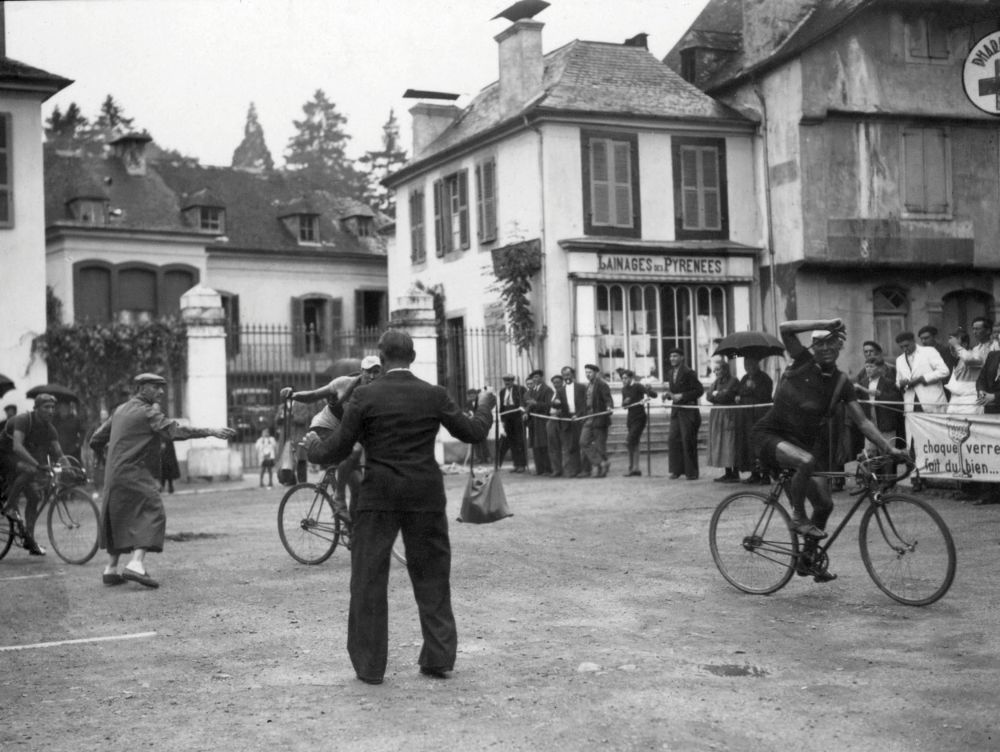Early 1900s: Anything goes
Nutrition was not a focus for riders in the early years of the Tour. The first Tour winner, Maurice Garin, reportedly ate at bars and drank from fountains along the way. The 1903 champion recalled consuming the following items during a 24-hour race: 45 cutlets, 19 litres of hot chocolate, 8 cooked eggs, 7 litres of tea, 5 litres of tapioca, 2 kilos of rice, lots of strong red wine, coffee, champagne, and oysters.
1900-1960s: Alcohol as a sports drink
It was common to drink alcohol while competing in endurance cycling events until the 1960s. Riders drank various drinks, from beer to wine to champagne, for both hydration and, reportedly, to have more fun during those long, gruelling stages. Riders would have to wait until the 1970s for proper sports drinks to replace their beverages of choice.

1910s: Enjoy a picnic
The Tour de France in the early 1910s had no feeding stations or soigneurs to help riders with fuelling. Riders just stopped along the road to refuel, usually with outside assistance. This would get you disqualified in the modern era of cycling.
The wealthier cyclists had their butlers set up picnics on the roadsides somewhere in the middle of the stage—if they could afford it. The choice of food was based mostly on “whatever gets you filled up quickest”. In France, that meant traditional European carb-heavy ingredients such as bread and pasta.
1920s: The first musettes
Around the time of World War I, the first use of musettes in cycling was recorded. Musette bags for cyclists roughly resembled those used by military troops in World Wars I and II. They allowed cyclists to grab all the snacks they needed without having to get off the bike. This tradition continues even today, although the contents of the bags has changed quite a bit.

The 1920s are also famous for cyclists smoking cigarettes to supposedly “open up the lungs” before big climbs. Thankfully, this tradition didn’t stand the test of time.
1930s: The rise of nutrition
It was in the 1930s that Tour de France riders started to consider nutrition as something important to their racing. The authors of a 1997 study called “Search for the Competitive Edge: A History of Dietary Fads and Supplements” wrote this:
“By 1939, Tour de France cyclists—those at the front of the pack—reportedly performed better after taking vitamin supplements”.

1930-1960s: Cycling teams are introduced
Tour de France organisers introduced national teams in 1930 and sponsored teams were allowed beginning in 1962. This brought about a change in nutrition too. The era of the scavenger racer was gone. Riders now ate their breakfasts and dinners as a team at hotels along the route.
Most riders still waited until after the first 100 km of racing before eating food from their musettes. But nutrition only increased in importance from that point on. We will take a look at that in our next article, covering the post-war Tour de France era.





